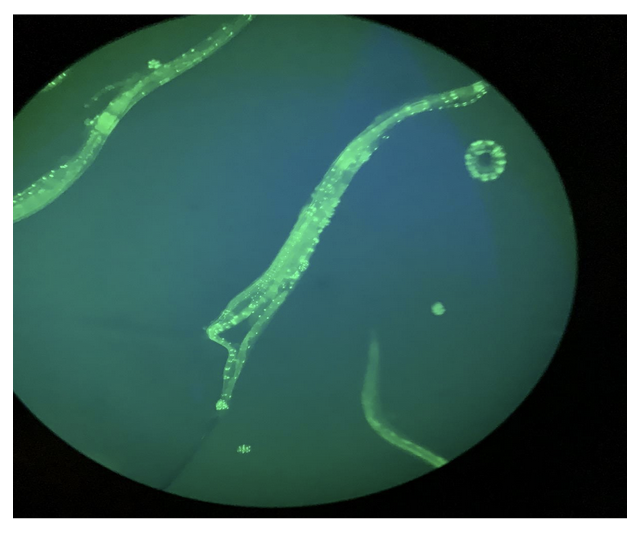News Excerpt:
Researchers found that after C. elegans worms ate a disease-causing bacteria, its children knew from birth to avoid making the same mistake. Given the mechanism by which this transmission occurs, the study raises questions about whether humans could have the same ability.

About the study:
Learned Avoidance Behaviour:
- C. elegans grows within 3-5 days from a fertilized egg to a millimeter-long adult, and it has provided profound insights into the human body and biology more broadly.
- Researchers found that when C. elegans worms ate a disease-causing strain of bacteria named Pseudomonas vranovensis, their offspring inherited the 'knowledge' to avoid this bacteria for up to four generations.
- P. vranovensis produces a small RNA molecule (sRNA) which the worms ingest along with the bacteria.
- This sRNA alters the worm's feeding behavior to avoid this pathogenic bacteria in the future.
- Not all genes encode mRNAs and proteins. The end product of some genes, especially small genes that are only about a tenth as long is sRNA. These sRNA bind to other proteins and RNAs, and either enhance or reduce the expression of other genes.
- This behavior is transmitted to the trained worm's progeny, grand-progeny, great-grand-progeny, and great-great-grand progeny, decaying only from the fifth generation.
- The sRNA from P. vranovensis reduces the expression of a gene called maco-1 in the worm, which plays an important neurological role and is also found in humans.
- When the researchers engineered E. coli bacteria to express the P. vranovensis sRNA and fed it to the worms,
- The worms learned to avoid the pathogenic P. vranovensis, and their offspring also inherited this behavior.
Good ‘memory loss’
- The worms trained to avoid pathogenic P. vranovensis initially also avoided the non-pathogenic Pseudomonas mendocina, which served as a source of nutrition.
- The researchers speculate that the 'memory loss' after five generations allows the worms to re-learn to consume beneficial bacteria like P. mendocina.
- The sRNA that triggered learned avoidance behavior came initially from the bacteria and was taken up by the worm that fed on them.
- The sRNA was maintained in the worms’ bodies, transmitted to their descendants, and maintained in them.
- This happens through a mechanism called RNA interference(RNAi).
- While RNAi is a gene-silencing technology that inhibits protein synthesis in target cells using double-stranded RNA, antisense technology achieves the same result through single-stranded RNA.
|
Additional Information:
|
|
Understanding RNA, large and small
|


